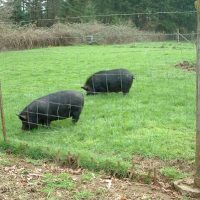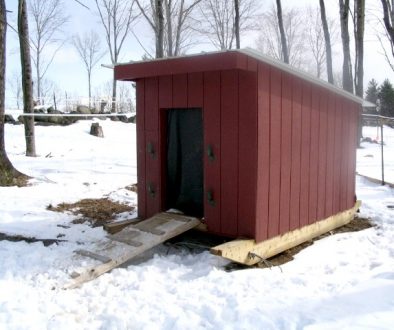Fencing for Guinea Hogs
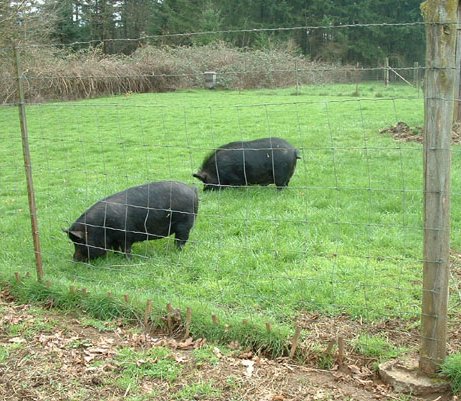
Containing the American Guinea Hog
Various types of fencing used to contain American Guinea Hogs, with woven wire field fencing (4 ft high) or hog wire (26″ to 34″ high) being used most commonly. Hog panels (3 ft high) or cattle panels (4 or 5 ft high), while more expensive, are much sturdier and can be used as well. Some people place 16 ft long hog panels against woven wire field fencing for additional strength and also to keep those little piglets in. Keeping at least 4 hog panels on hand can be quite useful when you need to temporarily pen up your hogs. A temporary pen using such panels can be held together by ordinary hay baling twine or bull snaps.
Photos of fencing can be found below, and also in a variety of farming books including Storey’s Guide to Raising Pigs. If you are just starting out and trying to configure a good fencing system, have a look at the “wagon wheel” configuration on page 128 of this book; it allows for the housing, feed and water to remain in one location, with easy access to a number of pens, thus allowing the pasture to regrow after the hogs have been moved to the next pen.
Visit the Portable Pens page on this site for more information on moveable containment for your pigs!
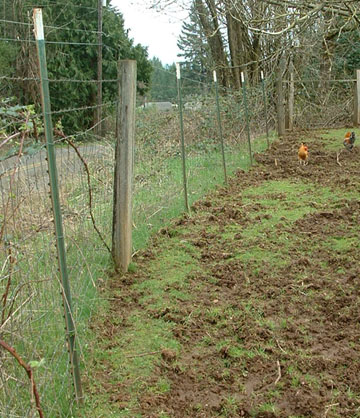
Above: Standard woven-wire field fencing topped with 2 strands of barbed wire for multi-species fencing. Black locust post at right, and metal T-post at left. Wooden stakes were pounded into the bottom of the fence due to escape tactics of the previous “other breed” pig tenants. Photo courtesy of Audacious Acres.
Perimeter Fencing with Cedar or Black Locust Posts
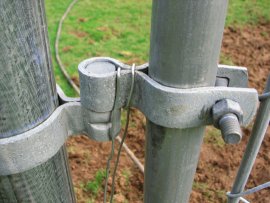
Perimeter fencing of the same style as above, with cedar or black locust posts spaced at intervals and T-posts between. Cedar or black locust posts were placed at corners and braced with 2×6’s. This pasture had just been vacated by Guinea Hogs who had lived there for 4 months before being rotated to another pasture. Photo courtesy of Audacious Acres.
Right: If you have pre-existing chain link fences and gates, you might be aware that goats and pigs are able to lift these gates off their hinges once they’ve figured out how. Here you can see how the folks at Cascade Meadows Farm figured out a solution to this problem using wire on the hinges.
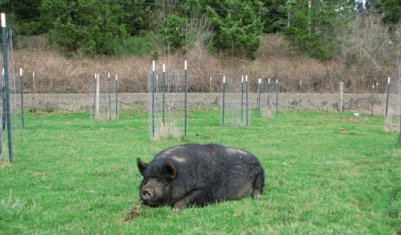
Above: A young orchard is protected from the pigs with 2″x4″ welded wire with t-posts. While the welded wire is enough to keep their pigs out of the young trees, it does not work for cattle, sheep, or goats. They had to come up with a modified version for the nut trees they planted in the pastures where they run those livestock using a combination of 4″x4″ cattle panels (strong enough for cattle) and chicken wire (small enough for sheep and goats). Photo above and below courtesy of Cascade Meadows Farm.

